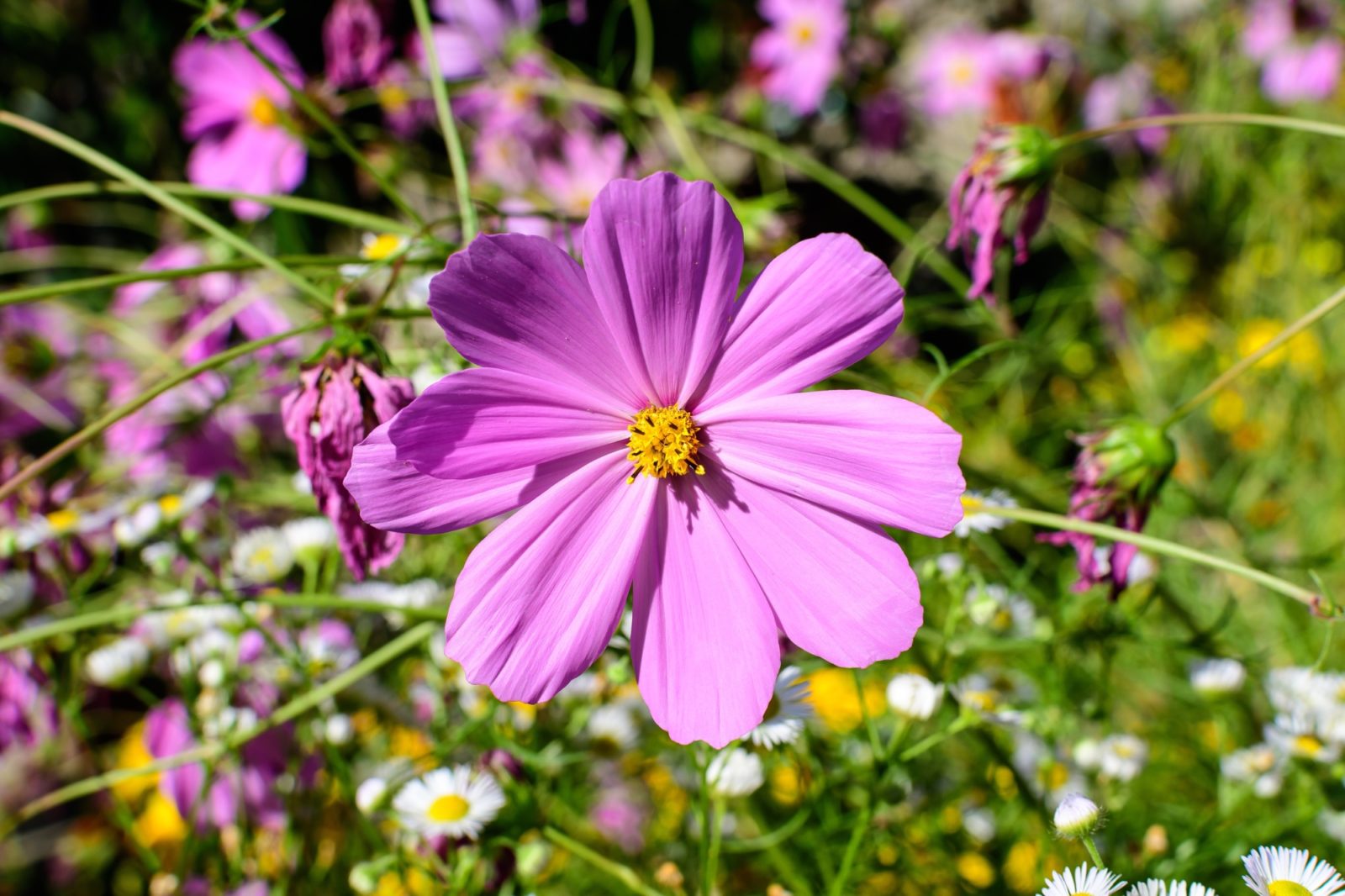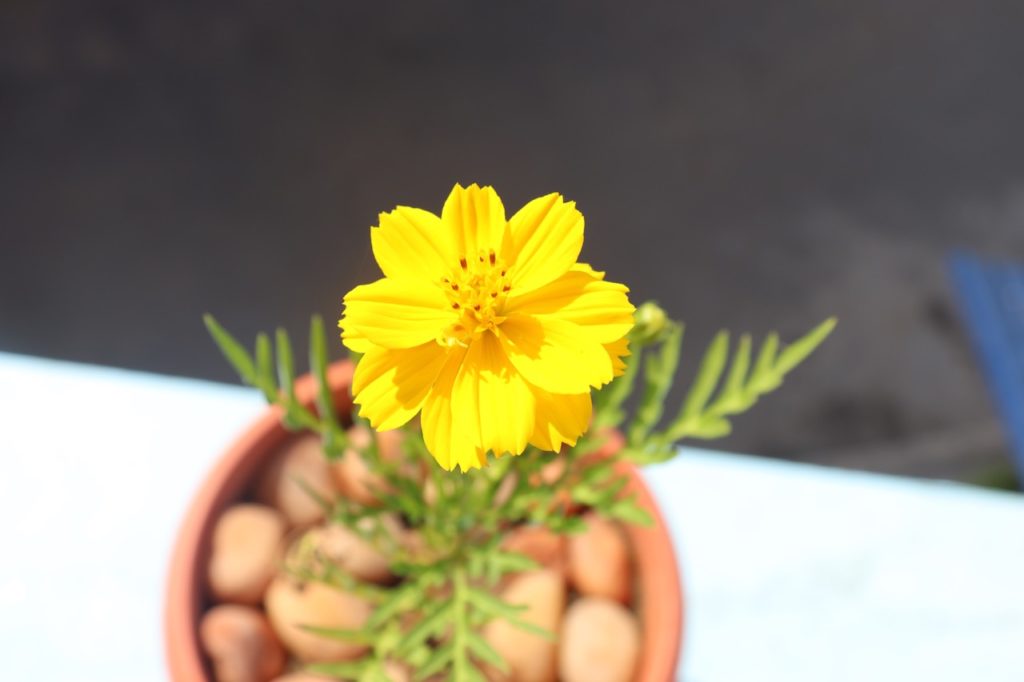Choose Shorter Cultivars When Growing Cosmos In Pots Says Elizabeth Waddington


Elizabeth is a Permaculture Garden Designer, Sustainability Consultant and Professional Writer, working as an advocate for positive change. She graduated from the University of St. Andrews with an MA in English and Philosophy and obtained a Diploma in Applied Permaculture Design from the Permaculture Association.
Reviewed By PETER LICKORISH

Peter is a Horticulture Lecturer and self-employed Horticulturist, with a passion for diverse areas of the industry - from garden design to the science behind plant growth and propagation. He has completed the Royal Horticultural Society’s Master of Horticulture (MHort) Award and lectures on RHS courses at Bedford College.
COSMOS GUIDES
Container Growing
Deadheading
Pinching Out
Sowing
Cosmos are pretty flowers that come in a range of hues.
There are many named cultivars of cosmos, usually from C. bipinnatus, which is a variety popular for growing in gardens.
Other popular varieties include C. sulphureus and C. atrosanguineus.
They are commonly used in cottage gardens, in gardens with a prairie planting style and are also used to attract pollinators as a companion crop in an annual vegetable garden.
| Difficulty | Easy |
| Equipment Required | Pots, potting compost, cosmos plant or seeds, hand trowel |
Cosmos can be a good choice for containers, though shorter cultivars will be easier to grow in this way.
There are cosmos that grow up to 1m in height, but those closer to 30cm will be easier to grow in pots.

Some cosmos cultivars that are good choices for a container garden include the Somata series, which are compact cosmos that grow to around 30cm tall.
The somewhat taller Apollo series, which grows to around 65cm in height, and the Sensation series, which grows to between 0.5-1m, are also good choices.
Containers For Cosmos
When choosing a container for your cosmos, you should choose a pot that is at least 30cm across and has several drainage holes at the base.
A heavier container will be less likely to topple or blow over as the plants grow which can be important if you are growing taller varieties.
Compost For Cosmos
Cosmos need a moist but free-draining growing medium that is moderately fertile.
To grow cosmos successfully in pots you need to choose a compost mix or potting medium that provides these conditions.

Cosmos are relatively unfussy when it comes to specific soil types or pH, but the moist conditions and good drainage are both key to success when growing these plants in a container.
A good quality peat-free multipurpose compost with some added grit for drainage or a homemade equivalent will be just fine when filling containers for cosmos.
Potting Up Cosmos
Cosmos is relatively easy to grow from seed or, alternatively, you can purchase young bedding plants in pots.

Whether you have grown your own cosmos from seed or purchased bedding plants, you should pot them up into the container in which they will spend the summer months.
When potting up cosmos, make sure that the plants are placed at the same depth that they were at in their previous pots or you can risk putting them slightly deeper if seedlings have become leggy when sown indoors.
How Many Cosmos Plants Per Pot?
How many cosmos you can plant in a container will, of course, depend on the variety you are growing and on the size of the container that you have chosen.
One thing to note is that you can get away with planting cosmos at around half the spacing usually recommended when growing in the ground to create dense and good-looking displays.

Another thing that will determine how many plants you can place in a certain container is whether you are only growing cosmos or are instead creating a mixed display with other flowering plants.
Cosmos can look good in mixed containers along with a range of other cheerful annuals or with different cosmos varieties.
Potted Cosmos Care
Cosmos are generally relatively easy plants to care for as long as you place them in the right position and care for them correctly.
To make sure that your cosmos thrives, position your pots in a relatively warm spot in full sun.
A south or west-facing position is ideal.
Provide some support for some taller varieties of cosmos that may need it.
Water your cosmos during dry spells throughout the summer months, remembering that plants in containers will typically need to be watered more frequently than those growing in the ground.
Make sure that excess water can always drain away freely, as cosmos cannot cope with waterlogged conditions.

Feed your cosmos in containers, once when they are in bud and then while they are in bloom, with a potassium-rich organic liquid plant feed to promote healthy flowers and prolong the flowering period.
Provide this while watering every couple of weeks for the best results.
If you have grown from seed, pinch out the growing tips of young plants once they have 2-3 sets of true leaves to promote bushiness of form and more abundant flower production.
Deadhead cosmos when the flowers fade to promote further flower growth and prolong the period of blooming.
“A common mistake when dead-heading is muddling new and spent blooms,” shares Master Horticulturist Peter Lickorish.
“The ones to remove are those which are both elongated and soft, whereas new buds are firmer and more rounded.”

Look out for pests and diseases.
Although they are generally untroubled by much, cosmos plants can be decimated by slugs, especially during the early stages of their growth, as Peter explains further:
“Slugs and snails can be pests of cosmos, but growing them in containers gives the option of lining the pot rims with copper.
“Wool pellets can be used as a mulch across the top of the pot too as another form of defence.”
Overwinter your cosmos in a frost-free location if you are growing a more tender perennial cosmos, like C. atrosanguineus.
If you are growing this rather than an annual, you will have to give it shelter over the coldest part of the year or propagate the plants by dividing the tubers when you lift the plants to store over winter.
